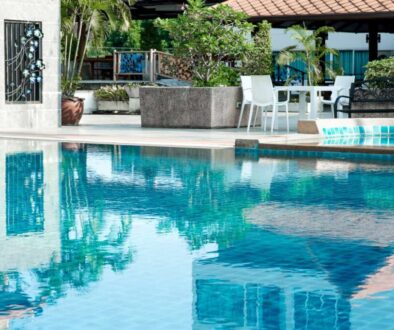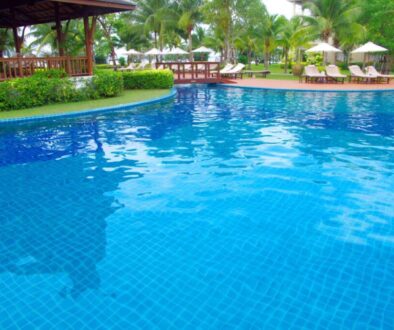How to Save for Retirement as a Pool Route Owner
As a pool route owner, planning for retirement is crucial to ensuring financial security in your later years. This guide will provide insightful strategies on saving for retirement tailored to the unique needs of pool route owners.
Introduction
Retirement planning may seem daunting, especially for those in the pool maintenance industry where income can fluctuate based on seasonal demands and customer retention. As a pool route owner, you’re not just managing a business; you’re also responsible for ensuring your financial future. This blog post will explore effective strategies to help you save for retirement while maintaining a successful pool route business. From understanding your earnings and expenses to making strategic investments, we will cover actionable steps that will provide a pathway to a stable and secure retirement.
Understanding Your Income and Expenses
- The first step in saving for retirement is gaining a clear understanding of your income and expenses. As a pool route owner, your income varies based on the number of clients you serve and the frequency of service. According to industry statistics, a well-established pool route can yield significant income, but it’s essential to track your earnings and expenses meticulously.
- Utilize accounting software or spreadsheets to monitor your finances. This effort will help you identify trends in your earnings, allowing you to allocate a portion for retirement savings. For instance, if you notice a spike in revenue during peak months, consider setting aside a larger percentage for retirement during those times.
- Additionally, understanding your business expenses is crucial. Consider the costs of equipment, chemicals, insurance, and any subcontractors you may hire. By minimizing unnecessary expenses, you can increase your net income and, consequently, your retirement savings capacity.
Setting Retirement Goals
- Once you have a clear picture of your finances, the next step is to set realistic retirement goals. Consider when you would like to retire and the lifestyle you envision in retirement. This vision will inform how much you need to save.
- According to financial experts, a general rule of thumb is to aim for 70-80% of your pre-retirement income to maintain your lifestyle. For a pool route owner, this may mean calculating the annual income needed by considering your current earnings and deducting expected expenses in retirement.
- Break down your retirement goal into smaller, achievable milestones. For example, if your target is to save $500,000 by retirement, set yearly savings targets that contribute to this goal. Regularly revisiting and adjusting these goals will keep them aligned with your income fluctuations and business growth.
Explore Retirement Accounts
- One of the most effective ways to save for retirement is by utilizing tax-advantaged retirement accounts. As a business owner, you have several options available.
- A Simplified Employee Pension (SEP) IRA is a popular choice for self-employed individuals, allowing you to contribute a significant portion of your income tax-deferred. In 2023, you can contribute up to 25% of your net earnings, making it an excellent tool for saving.
- Consider a Solo 401(k) if you have no employees; this allows for higher contribution limits and the ability to borrow against your account. By maximizing contributions to these accounts, you not only build your retirement fund but also reduce your taxable income.
- It’s essential to consult with a financial advisor to determine which retirement account is best suited for your specific situation, ensuring you’re on the right track to meet your retirement goals.
Diversifying Your Investments
- Saving for retirement is not just about putting money into a savings account; it’s also about investing wisely. As a pool route owner, consider diversifying your investments to ensure you have multiple income streams in retirement.
- Investing in real estate can be an excellent opportunity for passive income. Owning rental properties can provide steady cash flow, which complements your income from pool route ownership. Research markets in your area or consider investing in vacation rentals, particularly in tourist-heavy locations.
- Additionally, consider stock investments, mutual funds, or ETFs that align with your risk tolerance. Building a diverse portfolio can provide growth potential and help mitigate risks associated with market fluctuations. Always remember to reassess your investment strategy periodically as you age and approach retirement.
Building an Emergency Fund
- As a pool route owner, unexpected expenses can arise, from vehicle repairs to equipment replacements. Having a robust emergency fund can safeguard your retirement savings from being derailed by unforeseen costs.
- Aim to save at least three to six months’ worth of living expenses in a separate savings account. This fund should be easily accessible but not so convenient that it tempts you to dip into it for non-emergencies.
- By maintaining this financial cushion, you can ensure that your retirement savings remain intact during difficult times, allowing you to remain focused on your long-term financial goals.
Regularly Review and Adjust Your Plan
- Retirement planning is not a one-time task; it requires ongoing evaluation and adjustments. As a pool route owner, your income may change based on seasonal demands, customer retention, and market conditions.
- Schedule regular reviews of your financial situation at least once a year. Examine your retirement savings, investment performance, and overall financial health. If you find that you are off track in meeting your retirement goals, make necessary adjustments.
- Engaging with a financial planner can provide valuable insights and help you navigate changes in your financial landscape. They can also assist in developing strategies for tax efficiency, maximizing retirement contributions, and adjusting your investment allocations as needed.
The Role of Insurance in Retirement Planning
- Proper insurance coverage is an often-overlooked aspect of retirement planning. As a pool route owner, you should ensure you have adequate liability insurance, property insurance, and health insurance.
- Health care costs can significantly impact your financial stability in retirement. Consider long-term care insurance as a proactive measure to protect your savings from potential health care expenses.
- Life insurance can also play a crucial role in securing your family’s financial future in case something unforeseen occurs. Having these protections in place will provide peace of mind and safeguard your retirement assets.
Networking and Community Engagement
- As a pool route owner, building relationships within your community can open doors to new opportunities. Networking with other business owners and professionals can provide valuable insights into effective retirement strategies.
- Consider joining local business associations, attending conferences, or participating in industry forums. Engaging with others can help you stay informed about market trends, investment opportunities, and even potential partnerships that could enhance your income.
- Additionally, consider mentoring others in the industry. Sharing your knowledge not only helps others but can also solidify your reputation as an expert, leading to potential referrals and business growth.
Conclusion
In conclusion, saving for retirement as a pool route owner requires careful planning, proactive strategies, and ongoing evaluation. By understanding your financial situation, setting realistic goals, utilizing retirement accounts, and diversifying your investments, you can create a solid foundation for your future. Remember, the key to successful retirement planning lies in your commitment and willingness to adapt as your circumstances change. Take control of your financial future today and ensure a comfortable retirement tomorrow. To explore available Pool Routes for Sale and begin your journey toward financial independence, contact us at Tower Business Brokers.



